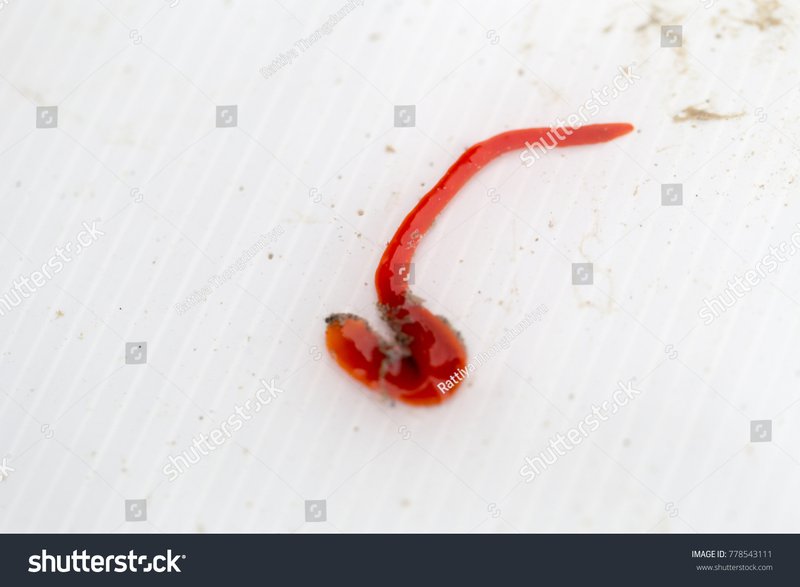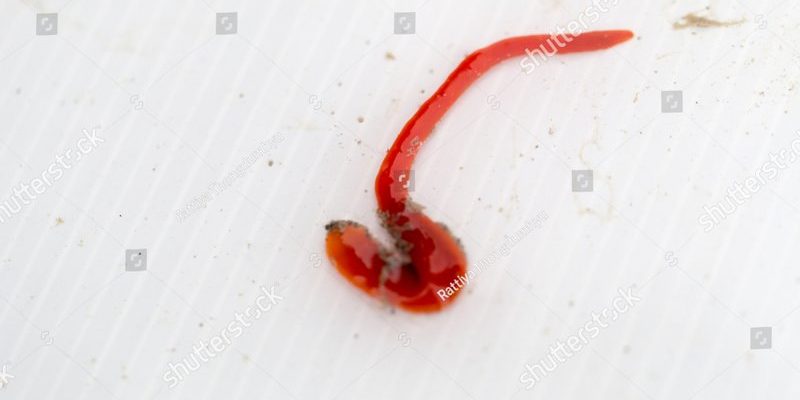
You might be wondering why we’re diving deep into the world of bootlace worms. Well, learning about how these creatures function can give us insight into the broader mechanics of movement in the animal kingdom. So, grab a cup of coffee, sit back, and let’s unravel the mystery of how bootlace worms use peristalsis to get around.
What Is Peristalsis?
At its core, peristalsis is a type of movement seen in various animals, especially those with long, tubular bodies like worms. Think of it like the contractions of your stomach when it digests food. These rhythmic muscle contractions push contents along a passage. In the case of bootlace worms, peristalsis allows them to move through their aquatic or moist environments effectively.
Imagine squeezing a tube of toothpaste—from the bottom to the top—forcing the paste out. In this scenario, each muscle contraction in the worm works similarly, creating waves that push the body forward. This style of movement is efficient, especially for creatures that live in tight spaces like sediment or underwater foliage.
Peristalsis isn’t just for worms; many animals, including humans, rely on this mechanism for various functions. But for bootlace worms, it’s a vital tool for survival and exploration.
How Do Bootlace Worms Perform Peristalsis?
Now, let’s take a closer look at how bootlace worms achieve this impressive feat. When a bootlace worm wants to move, it coordinates a wave-like contraction of its muscles. This involves both longitudinal and circular muscles working in tandem. The body is divided into segments, and as one segment contracts, the next relaxes, creating a ripple effect.
Picture a person doing the wave at a concert. One person raises their arms, then the next, creating a smooth, flowing motion. Each muscle segment in the worm acts like those concert-goers, alternating in a rhythmic pattern. This movement not only propels the worm forward but also helps it navigate through various terrains—whether it’s sand, mud, or a body of water.
Interestingly, the length of bootlace worms can reach over 30 meters (that’s about 100 feet)! This length is made possible by their unique peristaltic movement, allowing them to slide smoothly without getting tangled, regardless of their size.
Why Is Peristalsis Important for Bootlace Worms?
Peristalsis plays a crucial role in the survival of bootlace worms. For starters, it helps them hunt for food. These worms primarily feed on small invertebrates and organic matter found in their environment. By moving through the substrate, they can efficiently locate and consume their next meal. The wave-like motion also allows them to access deeper layers of sediment that might be teeming with nutritious morsels.
Additionally, peristalsis aids in escaping predators. When threatened, bootlace worms can quickly navigate through their surroundings, slipping away from danger. Imagine how a fish darts away from a predator; similarly, these worms can rapidly change their position to avoid becoming someone else’s dinner.
Lastly, this movement technique helps bootlace worms with reproduction. When they mate, these long, flexible creatures need to move around their partners efficiently. The ability to navigate their environment smoothly makes it easier for them to engage in mating behaviors.
Comparing Bootlace Worms to Other Worms
You might wonder how bootlace worms stack up against other types of worms, like earthworms or roundworms. While many worms utilize peristalsis, bootlace worms stand out due to their incredible length and adaptability. For instance, earthworms primarily move through soil, using peristalsis to burrow and aerate their environment. They have a more localized lifestyle compared to the expansive movements of bootlace worms.
On the other hand, roundworms can be found in various environments, but they don’t typically reach the size or length of bootlace worms. Their peristaltic motion is usually more straightforward, focusing on movement within fluid rather than navigating complex terrains.
The bootlace worm’s ability to combine peristalsis with its long body allows it to explore a wide range of habitats compared to its shorter relatives, making it a true marvel of nature.
Challenges Faced by Bootlace Worms
Despite their impressive movement techniques, bootlace worms face certain challenges in their environments. One significant issue is habitat destruction. As human activities disrupt natural ecosystems, the places where these worms thrive can become uninhabitable. This not only affects their ability to move but also their food sources.
Another challenge is predators. While bootlace worms have adapted to escape threats, they aren’t immune to being hunted. Various fish and other marine creatures may see them as a tasty snack. Here’s the thing: even with reliable peristaltic movement, their survival relies on constantly adapting to changes in their habitat and avoiding predators.
Lastly, pollution is a significant concern. Contaminated water can impact their ability to thrive, reducing food sources and affecting reproduction. So, while peristalsis is an excellent tool for movement, external factors can complicate their lives.
Bootlace worms may not be the most well-known creatures, but their use of peristalsis for movement is nothing short of fascinating. This rhythmic muscle contraction allows them to glide gracefully through their habitats, searching for food, escaping predators, and even finding mates. Understanding how bootlace worms navigate their environments gives us a deeper appreciation for the diversity of life on Earth.
As we explore the wonders of nature, let’s remember the importance of preserving the habitats that support these unique creatures. After all, every element in our ecosystem plays a role in maintaining balance, and the bootlace worm is just one of many marvels that remind us of the intricate connections within our world. So next time you think of worms, consider the bootlace worm and its incredible journey through life!

